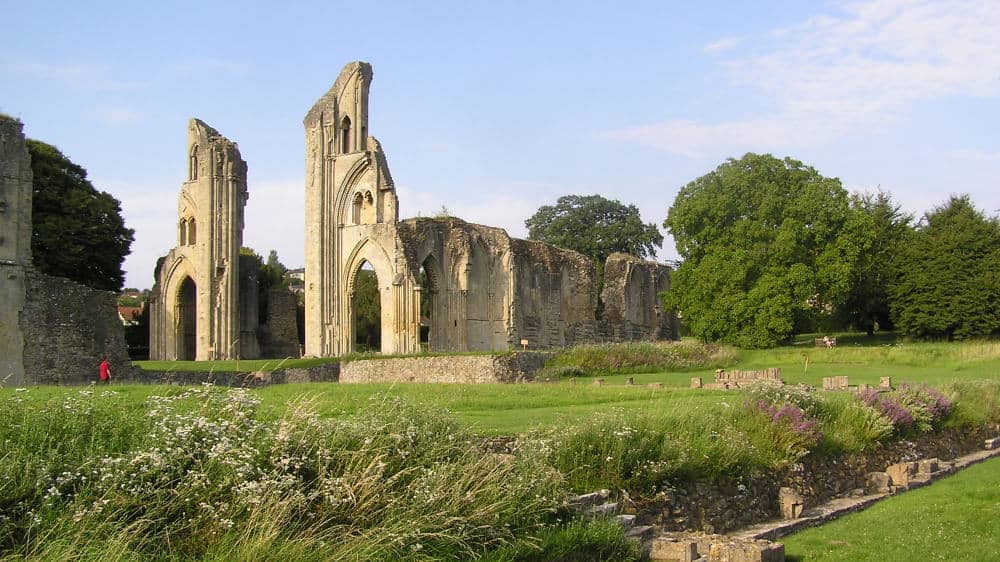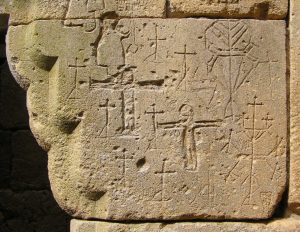Glastonbury brings together creativity, spirituality, and mystery. It’s a great place to explore while learning about the Celts, Arthurian legend, and early Christianity.
What is the Glastonbury mystery?
Glastonbury is, without a doubt, one of Europe’s most mysterious locations. The myths and legends surrounding this location are as old as humanity.
According to legend, Jesus walked around here with his uncle Joseph of Arimathea. It is said that Joseph founded a church on the Glastonbury Tor and hid the grail underneath it. This is why Glastonbury played an important role in the Grail legend during the Middle Ages.
In Celtic times, the “Glastonbury tor” was associated with the “on-world, a kind of parallel world.” It was called Avalon or Annwn, and it was the burial place of King Arthur.
Avalon or Annwn, the Celts' parallel world
Annwn is derived from the word un-world. As this is not the same as the underworld, I prefer the term “parallel world.”
It is a world that coexists with ours. This world is accessible through a passage in Glastonbury Tor. It is the world of fairies, where a fairy can take various forms according to Celtic mythology. Annwn is a magical place, both beautiful and terrifying at the same time.
The name Avalon could be derived from Annwn or maybe from the Celtic god Afallach. In the story of Urien and Modron, Affalach’s daughter refers to him as the King of Annwn.
Annwn and Avalon were both considered islands; in the early days, there was a big lake with Glastonbury Tor and Wearyall Hill as two of the most prominent islands.
Avalon, the burial place of King Arthur

According to legend, King Arthur’s final battle took place around Glastonbury. Three witches took the mortally wounded King Arthur to Avalon at Camlann. In this story, Avalon is a strange place that can only be reached by those who can summon a magical boat – something the witches did.
In 1190, monks from Glastonbury Abbey discovered a grave in a hollowed-out tree with the inscription, “Here on the Isle of Avalon, the renowned King Arthur has been laid to rest.” Furthermore, the story goes that they discovered a skeleton of a man measuring nearly 2.5 meters in length. A woman’s blonde hair was also discovered.
The monks placed the remains in caskets, and during a visit to the Abbey by King Edward I, they were interred in a special tomb made of black marble in the Abbey’s main church. Unfortunately, the caskets went missing during the Dissolution of the Monasteries. To this day, they have not been found. The supposed location of Arthur’s final resting place is marked by a notice board in today’s day and age.
The hiding place of the grail
However, Glastonbury’s fame isn’t solely based on the fact that it is the final resting place of King Arthur. There is yet another well-known myth that is said to have occurred in this region. It is the myth of the Holy Grail, hidden under the Tor by Joseph of Arimathea.
The Bible describes Joseph of Arimathea as “well-intentioned and righteous.” He was a wealthy man, and Jesus was laid to rest on his property.
This Joseph, according to legend, visited England twice. He first came to this area with the ten-year-old Jesus. As a tin merchant, he visited the tin mines in southern England. Although there is no mention of it in the Bible, it is said that he was the uncle of Mary, the great-uncle of Jesus.
After Jesus died, Joseph of Arimathea fled Israel and returned to this area to preach the gospel.
The area around Glastonbury was still underwater at the time. So he moored his boat on an island now known as Wearyall Hill. He got out, and planted his staff firmly in the ground. This stick quickly began to blossom. It is a hawthorn that still blooms twice a year. Every year around Christmas, the royal family of England receives a flowering branch of this tree.
According to legend, Joseph carried the grail on this journey. This was the cup used by Jesus at the Last Supper. Furthermore, Joseph of Arimathea had collected Jesus’ blood in it and hid this sacred object beneath Glastonbury Tor.
What to see and do in and around Glastonbury?

Let us state right away that Glastonbury is a tourist destination. The main street is bustling and colorful. Everything related to spirituality is available for purchase in the shops. Crystals, pendants, and vibrantly colored fabrics from Third World countries. The bookstores are also popular, so if you’re looking for a book about the unimaginable, you will find it here.
The following are Glastonbury and surrounding area recommendations:
- Glastonbury Tor
- Wearyall Hill
- The Abbey of Glastonbury
- White Spring and Chalice Well
There is more to visit, but these locations have everything to do with the stories and legends I mentioned earlier.
Glastonbury Tor
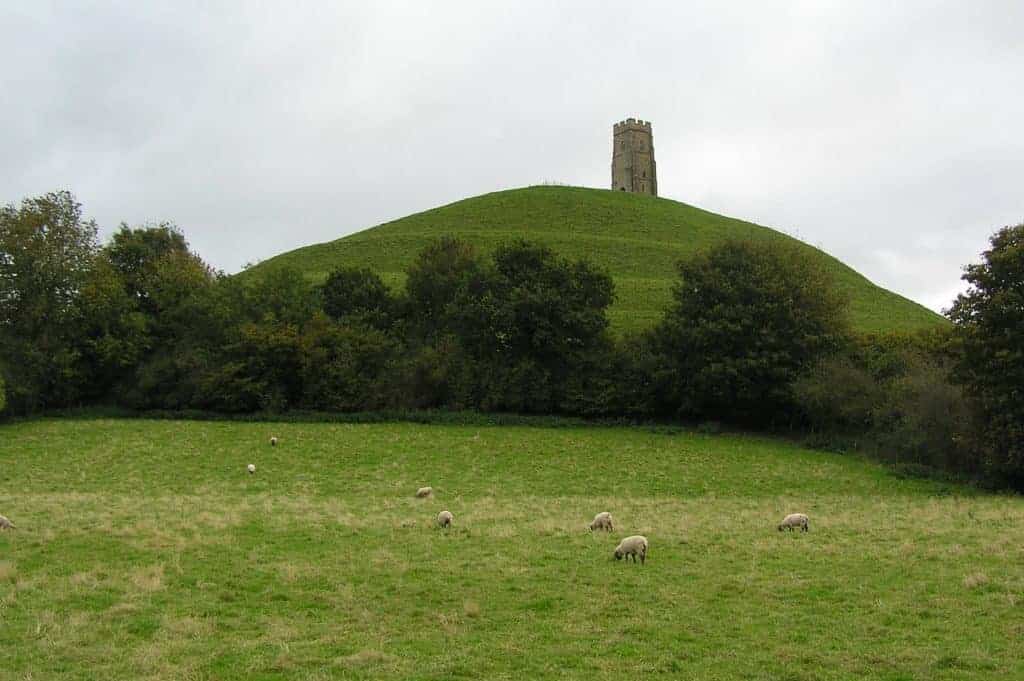
The Celtic word for hill is tor. This 158-meter-high hill was situated in a swampy environment. It can appear as a mirage above the clouds on a foggy day. A lonely tower stands atop the hill. It is all that remains of the church dedicated to Saint Michael in the 14th century.
The tower (along with the Abbey and Chalice Well) is located on an important ley line, the St Michael line, which runs through England from Lands End and St Micheal’s Mount to Great Yarmouth. There is also a European St Micheal Alignment, connecting Skellig Michael in Ireland to Monastero Stella Maris (Mount Carmel) in Israel. The lines cross at St Micheal’s Mount.
Michael is the archangel who defeats dragons. Saint George is his earthly counterpart.

Back to the Tor.
On the church’s walls, you will find some paintings. One of them is Saint Brigid of Kildare, the patron saint of cattle.
There were excavations around the tor in the 1960s. A fort dating from the sixth century is plausible. The terraces around the mountain could be Neolithic in origin. Some people see it as a labyrinth.
The Tor is open every day of the year. Try to visit it at sunrise when you can feel the stillness of the place. In addition, the sunset is an intense experience, but it is pretty busy during the summer. Some people have had mystical experiences on or near the tor. Balls of light are frequently observed.
Wearyall Hill
The weary Joseph of Arimathea put his staff in the ground here. The famous hawthorn grew from it. Vandals destroyed it in 2010. In fact, this was not a 2000-year-old tree but a cutting that had been replanted there in 1951. The planting from 2012 was also damaged. I’m not sure if there is a new tree right now.
Wearyall Hill offers a beautiful view of Glastonbury and the Tor.
The Abbey of Glastonbury
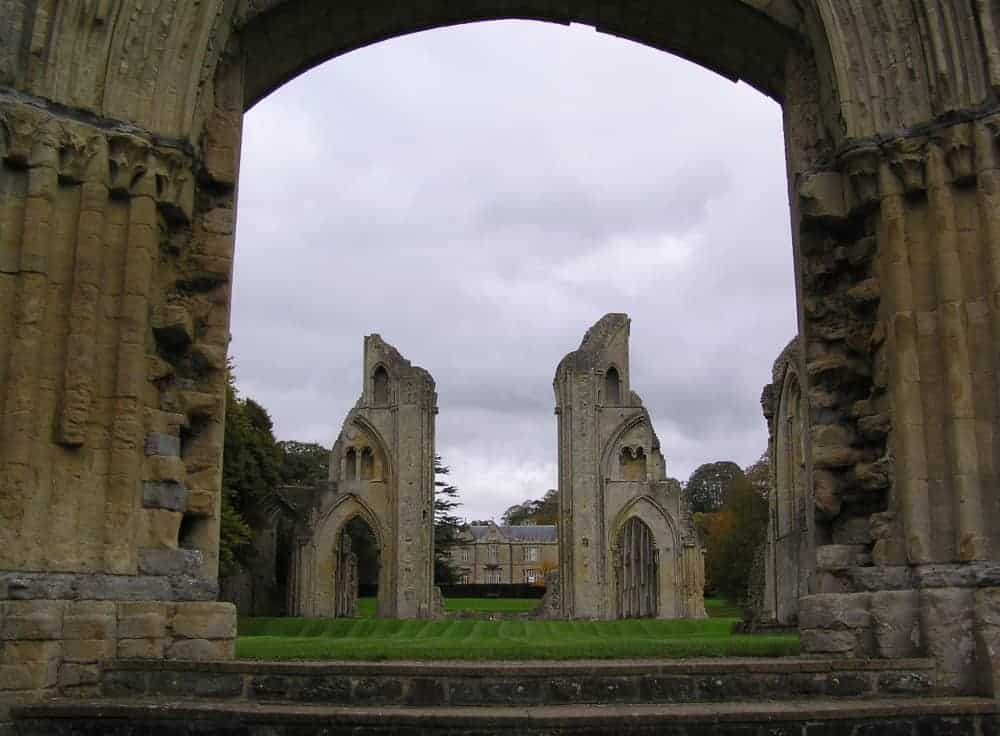
In 461, the famous Saint Patrick (Saint of Ireland) died in this Abbey. As a result, it became a popular pilgrimage destination. It was the wealthiest Abbey in England in 1086. A devastating fire broke out in 1184, reducing almost the entire Abbey to ashes. To raise funds for the restoration, the monks claimed to have discovered King Arthur and his wife Guinevere’s tomb. As I mentioned, the tomb was moved to the Abbey’s grounds. This drew the necessary pilgrims, resulting in the money flowing in.
Henry VIII ordered the destruction of the Abbey in 1539. In 1908, work on consolidating the ruins began. The Church of England purchased the Abbey. At the moment, the Abbey receives over 100,000 visitors per year.
The impressive, sprawling, and majestic ruins of the Abbey can be found just off of the main High Street of the town, where many of the shops specialize in the sale of magical artifacts and objects.
White Spring and Chalice Well
There are two springs at the Tor’s base: White Spring and Chalice Well. The least known is White Spring. Calcium carbonate is responsible for the water’s white color. The water has a pleasant flavor. This spring can be found directly across the street from Chalice Well. The source was barely visible the last time I was here. People are currently attempting to pay more attention to it.
Chalice Well is set in lovely gardens. The well is a place of rest, and if you’re lucky, you can sit there alone or with your loved ones. When I was there, a robin came to keep me company. It was a meditative and intense moment in a beautiful setting.
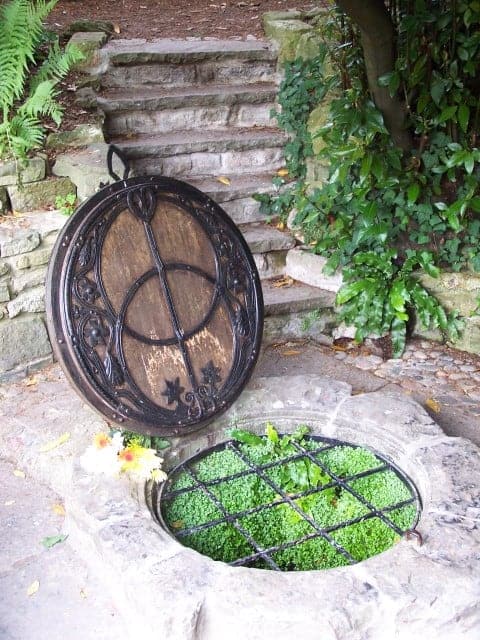
In 1919, the city was given the spring’s lid, which depicts the Vesica Piscis, as a gift. Frederick Bligh Bond, the director of excavations at Glastonbury Abbey, designed it. The Vesica Piscis is a basic form of sacred geometry. We recognize the ICHTHUS symbol in this.
The water from the Chalice well is red because it’s high in iron. However, some people believe it is Jesus’ blood, thanks to the grail that Joseph of Arimathea hid in the Tor. As a result, the water from this source is believed to have medicinal properties.
A lovely hotel just outside Glastonbury
This hotel is just great:
- best food
- lovely staff
- good breakfast (included)
- comfortable rooms
- very clean
The Lion at West Pennard is located in West Pennard, just 5 km from Glastonbury. This 15th-century pub offers renovated en suite rooms with a fireplace.
Museums in Glastonbury
Glastonbury has three museums. The shoe museum is open to the public and houses a collection of hundreds of shoes dating from Roman times to the present. The Glastonbury Lake Village Museum has artifacts found in Somerset’s marshy areas, and the Somerset Rural Life Museum shows how people lived in the county’s rural areas.
Events
Glastonbury is always buzzing with activity. People who are interested in the spiritual and inexplicable can visit one of the ongoing lectures. Something special is always planned for the solstices and equinoxes.
Every year, the Glastonbury Music Festival takes place. Tickets for this event are nearly impossible to obtain because they are frequently sold out within an hour. The crowds are massive during the festival, so if you don’t like large crowds, it is best to avoid Glastonbury.
Practical information
You can make the Glastonbury Way Day Pilgrimage, passing all highlights mentioned above and more. Check it out!
Hotels
If you are looking for an accommodation, you can use the app below. Just fill in the dates to check what is available. You can zoom out to see more hotels in the area.

